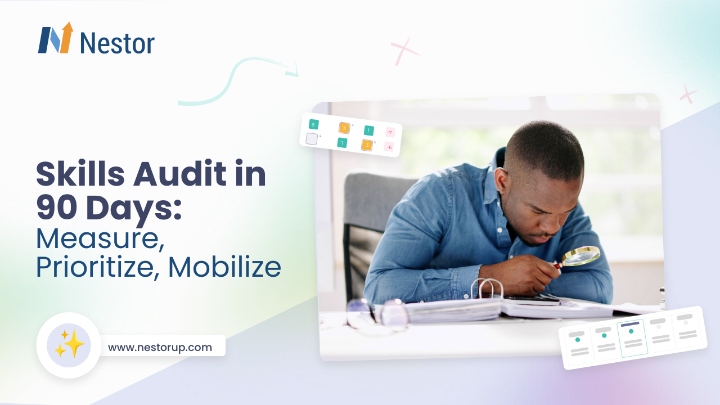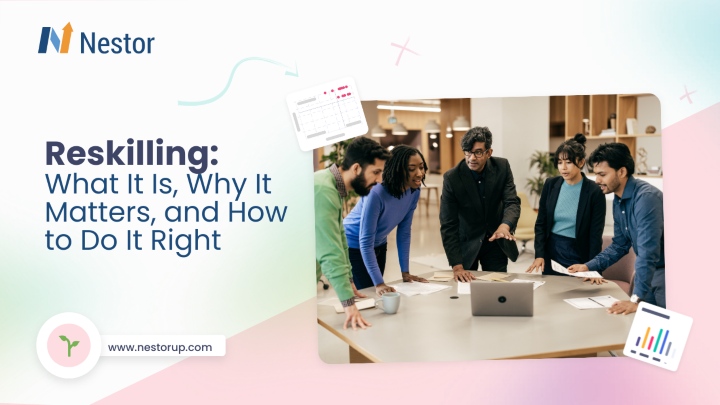
Agility has become a buzzword in the modern workplace as companies look to stay competitive in the rapidly changing business environment. And to meet the demands of this new era, organizations are turning their attention toward the essential skills of an agile workforce.
These are the skills and behaviors defining teams of employees who can work across a wide range of projects, pivot quickly, and deliver value to customers in a dynamic, fast-paced environment.
In this article, we’ll explore the key components of workforce agility, including the skills that employees need to succeed, and the principles that underpin agile methodology.
What is an agile workforce?
An agile workforce is characterized by its speed, adaptability, flexibility, and diverse skill set. To be considered ‘agile’, workers should possess the following qualities:
- The ability to move between tasks and projects easily
- Skills and know-how that are transferable to different contexts
- A positive, can-do attitude in response to new challenges and opportunities
- A proactive approach to problem-solving, rather than a reactive one
- A willingness to experiment and learn from their mistakes
These qualities increase efficiency and productivity and help companies stay ahead of trends and disruptions, allowing them to remain competitive in the business world.
Other attributes that characterize an agile workforce
- They are not deterred by challenges
- They are not resistant to change
- They understand how much their goals mean to stakeholders
- They are willing to take up additional responsibilities
- They show higher levels of employee engagement
- They are self-motivated and focused
What are the skills of an agile workforce?
To become impactful and resilient, an agile workforce embraces and seeks to develop skills like:
#1 Cooperation
In an agile environment, team members are encouraged to work closely together and share their expertise to achieve a common goal. Since they come from different backgrounds and possess different capabilities, it’s important to ensure alignment and that everyone is working toward the same goal.
Cross-functional cooperation also plays a crucial role in the process of networking and developing work relationships based on mutual trust and understanding. In turn, these high-quality relationships will lead to higher engagement and job satisfaction.
#2 Adaptability & flexibility
An agile workforce must be able to adapt to changing circumstances and new challenges. This includes being able to adjust their approach, processes, and mindset as needed to meet project requirements, business goals, and customer needs.
And adaptability goes hand in hand with flexibility. This is what allows agile workers to pivot quickly, embrace change, and thrive even in an environment of uncertainty.
#3 Soft skills
Soft skills are number #3 on our list with skills of an agile workforce. And whether you call them soft, people, or non-technical skills, these abilities are all about connecting employees and allowing them to successfully work together as one force. Soft skills include but aren’t limited to: communication, negotiation, networking, or sub-skills like listening.
They are essential in reaching high levels of efficiency and represent the basis for a positive dynamic between employees and between managers and their teams.
#4 Decision-making
In an agile work environment, decision-making is crucial for:
- prioritizing tasks
- allocating resources
- managing risks
- adapting to evolving requirements and market conditions
Encouraging and developing these skills should be a priority for any organization looking to transition to workforce agility. And it can start by giving people even more ownership over tasks and creating an environment where everyone feels safe to take initiative.
#5 Problem-solving
Problem-solving is one of the most important skills of an agile workforce. Effective problem-solving enables teams to identify and address issues quickly and efficiently, ensuring that projects remain on track. Common strategies for solving problems include brainstorming and experimenting, which allow workers to be creative and think out of the box.
By identifying and addressing issues quickly, teams can also learn from their mistakes, improve their processes, and continuously enhance their performance.
#6 Creativity
Creativity is the foundation for novel perspectives and innovative solutions, which help businesses keep up with customer needs. It remains essential for agile workers who face constant changes and new business expectations.
And while creativity isn’t exactly a skill — but an innate ability — it can be encouraged and explored through:
- A culture of openness and trust
- Gratitude and mindfulness
- Blocked time intervals without distractions
- Spending some time, in silence, by yourself
#7 Stress management
Managing levels of stress has become more of a necessity than a skill in a world where “90% of workers are affected by mental health challenges, either personally or through someone they are close to”, according to the WEF. But why is this relevant to agile workforces, who should be more efficient and collaborative?
Because with internal mobility and talent sharing also comes the risk of an unbalanced allocation of resources. That’s how some employees can end up taking on more responsibilities and tasks than they should, affecting both their performance and general well-being.
It’s worth mentioning that our list with skills of an agile workforce is by no means exhaustive. While it includes some of the abilities we deem to be critical for modern workers, it can be expanded with additional entries.
Agile workforces are teams of employees who can work across a wide range of projects, pivot quickly, and deliver value in a dynamic, fast-paced environment.
What are the pillars of an agile workforce?
In addition to the skills listed above, other factors that provide the necessary support in the creation and development of an agile workforce include:
Organizational redesign
To succeed, workforce agility needs to be backed by rethinking how organizations approach work and evaluate success. It’s a process that will impact internal structures, procedures, and even the technologies and platforms used.
It all starts with adopting a skills-based strategy and moving beyond the traditional top-down hierarchical structures. It’s a change from fixed job titles and expectations to flexible responsibilities and projects assigned based on skills.
The teams in charge of these projects will be — you’ve guessed it — assembled based on the capabilities and know-how necessary to reach the organizational goals. Members of these teams can come from any department as long as they meet the necessary criteria and are a good fit.
And that’s what an agile workforce is all about — combining different elements of a puzzle efficiently and rapidly to achieve the desired results. All while promoting employee growth in the process.
Openness to change & new technologies
Being open to novel ways of working, collaborating, or cutting-edge tools represents massive support to both agile leaders and workers. It’s also a necessity since a lack of openness will prevent organizations from making this cultural shift in the first place.
Clear and transparent communication is essential to prevent workers from having doubts about this new approach or questioning their own ability to fit into this new work model.
Culture of trust
Nurturing a culture where trust is the default benefits any business or work model. But it is even more important for agile workforces because cross-functional and cross-departmental collaboration can only succeed where trustworthy interactions are present.
Let’s look at the talent-sharing principle, for example. In a culture that lacks trust or competition is still high, it’s easy to see why a manager might be reluctant to let their top performer(s) leave and join other projects or teams, even on a temporary basis. A culture of trust will prevent this type of scenario.
Growth mindset
The only way to embrace new challenges and approach problems with a can-do attitude is with a growth mindset.
That’s because it doesn’t come naturally to look at difficulties and see opportunities. It requires a change in perspective. A shift in mentality at a very fundamental level. And a fixed mindset won’t allow that because it is all about limits.
But growth, including in business, can only happen when you step outside your limits.
Continuous learning opportunities
While flexibility and cross-departmental work will support employees’ growth, those aren’t enough. Not when you want to nurture true workforce agility. You need to provide transparent and diverse learning opportunities — courses, job shadowing, coaching, mentoring, etc. — which are available to all employees.
These opportunities can also be facilitated by programs or platforms, including internal mobility or talent marketplaces.
Reskilling and upskilling
This is more of a ‘sub-pillar’ of ongoing learning. While some people will grow through cross-functional activities, others will require strategic and well-planned programs, either to improve existing skills or develop entirely new abilities.
These initiatives need to be aligned with business goals and also with the employee’s career aspirations and interests.
How Nestor can help you develop a skills-based agile workforce
At Nestor, we believe in the power of skills and a style of work that allows everyone to thrive while growing based on their own abilities and interests.
Our People Intelligence Platform helps organizations map their current and future skills needs, identify competency gaps, and create a truly agile workforce. And we take it to the next level with employee skills profiles, tailored growth opportunities, and tools that drive self-leadership. All in one easy-to-access-and-use platform.
Let us unlock the full potential of your workforce together!










